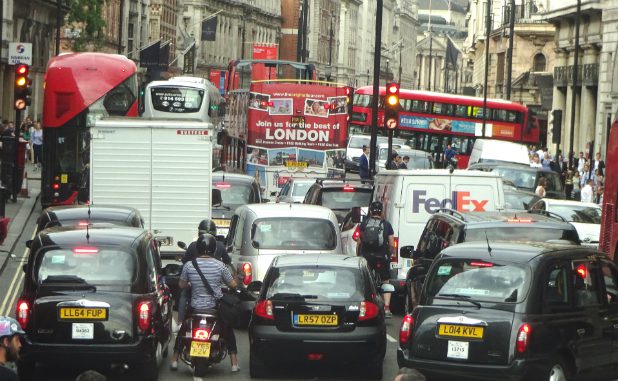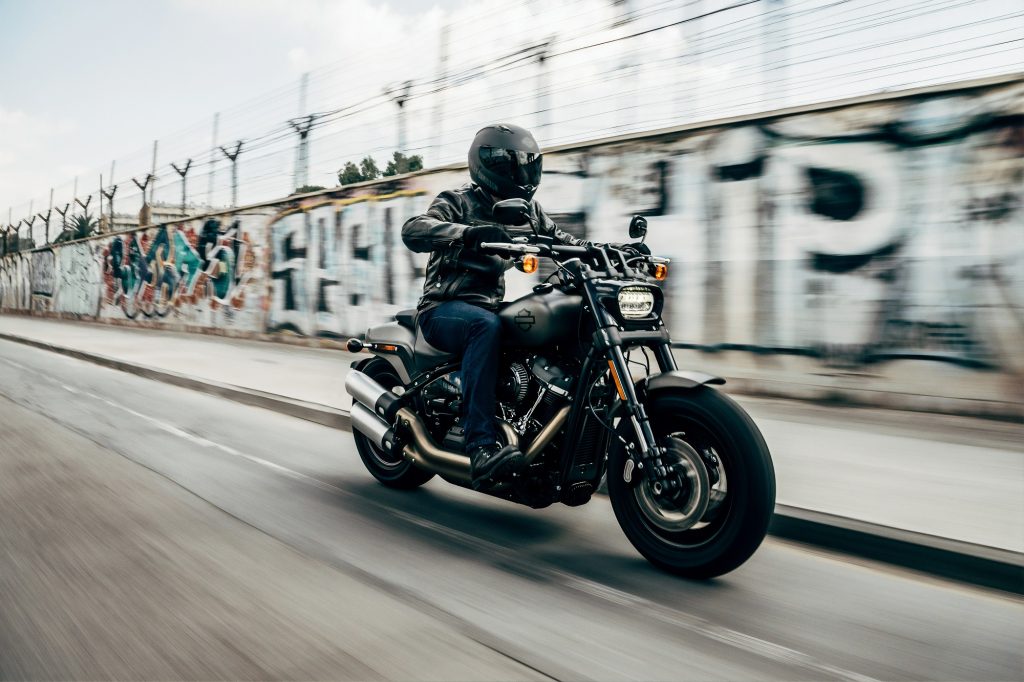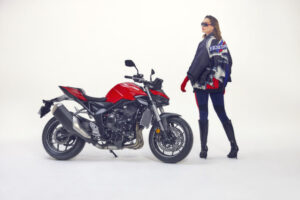The ultimate guide to ULEZ for motorcycles

The Ultra Low Emission Zone (ULEZ) in Central London was established in April 2019. If a vehicle enters the ULEZ and does not meet the required emissions standards, a £12.50 fee will be charged to the driver. Although the ULEZ affects all vehicle types, from mopeds to minibuses, this guide will help you understand the regulations regarding motorcycles.
Unlike the Congestion Charge zone, ULEZ applies to two-wheeled vehicles. As the Congestion Charge was introduced to combat traffic and Transport for London do not consider motorbikes as part of this issue, they are not required to pay. However, motorbikes and other two-wheeled vehicles do create emissions, along with cars, vans and trucks.
Where does ULEZ cover?
The new Ultra Low Emission Zone will be extended from 29th August 2023
ULEZ currently covers all areas in the North and South Circular Roads. The North Circular (A406) and South Circular (A205) roads are not in the zone.
From 29th August 2023, ULEZ will expand across all London boroughs. The expansion has occurred because, according to TfL research, the greatest number of air-pollution-related health issues occur in outer London areas.
If you are unsure if the location you plan to drive in is part of ULEZ or not, you can check information provided by the Transport for London (TfL). However, there should be sign posts to make drivers aware when they are entering the zone – both half a mile away and as you enter.
A number of other cities across the UK have implemented equivalent Clean Air Zones (CAZ), including:
Plans are also underway to implement low-emission zones in the following cities:
Manchester (public consultation due to take place in early 2023)Aberdeen (due to come into effect in June 2024, with some vehicles being exempt, including historical vehicles)Dundee (due to come into effect in May 2024, with some vehicles being exempt, including historical vehicles)Edinburgh (due to come into effect in June 2024, but there are some exemptions, including motorcycles and mopeds)Newcastle (due to come into effect in January 2023, but private vehicles will not be included)Sheffield (due to come into effect in February 2023, but private vehicles will not be affected)
How much does the ULEZ charge cost?
 Find out about ULEZ charges before travelling into London
Find out about ULEZ charges before travelling into London
The £12.50 charge is applied to polluting vehicles every day they are used in the zone. If you were charged for every day in the year, the total would reach £4,550.
The cost for vehicles weighing more than 3.5 tonnes is £100 per day.
The fee is reinstated at midnight every night – if your vehicle is only in Central London for an hour, but this hour runs over 12:00am and 12:01am, you will be charged for two days. If you pay the charge for the day, you are free to leave and enter the zone as often as required on that day. The only day of the year when ULEZ is not in action is Christmas Day.
How can I pay?
Set up Auto Pay, which will cost you an additional £10 annual chargePay onlineDownload the appPay by phone
o UK: 0343 222 2222 (TfL call charges)
o International: +44 343 222 2222
o Textphone: 020 7649 9123 (if you have impaired hearing)
ULEZ compliant requirements
ULEZ compliant motorcycles must meet the pre-determined emissions limits and weigh less than 3.5 tonnes, otherwise they will face the charge. It is not difficult for a motorcycle to weigh less than 3.5 tonnes, with most bikes weighing less than 200kg.
Additionally, if a bike is over 40 years old – and therefore deemed a historic vehicle – or is an electric vehicle (EV), it will not be charged.
Disabled drivers also have a grace period (i.e. a temporary exemption) before they must pay the charge. As a result of the August 2023 ULEZ expansion, you can apply for the grace period from 30th January 2023. Those who are eligible will not need to pay the daily charge until 25th October 2027.
ULEZ relates to the declared emissions of a vehicle rather than its age, but in general, Euro 3 motorcycles registered after 2007 will be compliant. However, the vehicle (motorcycle, moped, motorised tricycle or L-category quadricycles) must specifically meet the Euro 3 emissions standards for nitrogen oxides (NOx).
What is the Euro 3 emissions standard?
 Find out more about Euro 3 emission standards
Find out more about Euro 3 emission standards
The first European emissions standard was introduced in 1970, with ‘Euro 1’ following in 1992. Since then, the standards have been updated, with ‘Euro 3’ first implemented in 2000. The standards have now reached Euro 6.
Euro 3 was the first standard to split the hydrocarbons and nitrogen oxide limits for petrol and diesel vehicles, while also adding a separate nitrogen oxide limit for diesel.
Euro 3 standards for petrol engines
Carbon monoxide (CO): 2.3g/kmTotal hydrocarbons (THC): 0.20g/kmNitrogen oxides (NOx): 0.15g/km
Euro 3 standards for diesel engines
Carbon monoxide (CO): 0.66g/kmHydrocarbons (HC) + nitrogen oxides (NOx): 0.56g/kmNOx: 0.50g/kmParticulate matter (PM): 0.05g/km
Which bikes are ULEZ compliant?
Almost all motorcycles that have been produced since 2007 are ULEZ compliant. Motorbikes meeting Euro 3, Euro 4, Euro 5 or Euro 6 standards will be exempt. Other vehicles, such as cars, must meet Euro 4 regulations or newer.
However, there are several pre-2007 vehicles that emit less than 0.15 g/km of NOx. For instance, the 2006 BMW R1200GS produces around a quarter of the figure while older Honda VFR800F VTEC bikes are also under the limit. Others include:
BMW R1150GS (2001 and 2003)Harley Davidson Fat Boy (2001)Honda CBR900 (1997Honda CBR1100XX Blackbird (1996 and 2006)Kawasaki W650 (2003)Kawasaki ZX6R (1997)KTM 950 Supermoto (2005)Suzuki GSF650 (2005)Yamaha RD350 (1984)Yamaha Fazer 1000 (2005)
How to perform a ULEZ motorcycle compliance check
You can find out if your motorcycle is ULEZ compliant by referring to the bike’s vehicle registration document (V5C) or contacting the manufacturer for a Certificate of Conformity (CoC). Some manufacturers will charge for the CoC. If you submit your proof, this will not exempt others with the same or similar vehicle, as the V5C is linked only with the bike’s registration number, and not the range of model.
You can also have your bike tested, but all emissions testing centres must be approved by the government. The only one the government currently regards as approved is Riverbank Motorcycles Ltd in Bow, London. However, test centres can email their contact details to [email protected] for review. The centre charges £175 per test but claim the majority of the vehicles they test are under the limit. You may find if your bike has a Q-plate, the only option is to have it tested as the DVLA and manufacturers may not have the necessary data or CoC.
Otherwise, you can check directly with TfL online. The site features a simple form that only requires you to enter your registration number (number plate) and the country of registration.
What to do if you think your bike is compliant but can’t find the information
If you have used the government’s checking system and have been informed that your motorbike is not ULEZ compliant, but you believe it is, then contact the vehicle’s manufacturer. The government will accept any supporting evidence that proves your bike is releasing less than the maximum level of emissions.
You can register your vehicle for ULEZ here.
How much will it cost if your bike is not ULEZ compliant?
As previously stated, the charge is £12.50. However, if you fail to pay the charge, you will face a penalty charge of £160 – or £80 if paid within 14 days.
You may opt to upgrade your vehicle for it to become ULEZ complaint – if you travel or live in London, this could be financially beneficial in the long-run and is better for the environment.
How to upgrade your bike to become ULEZ compliant
If you regularly maintain your motorcycle, it is more likely to cause less environmental damage. Monitoring and adapting fluid changes, equipment checks and the bike’s exhaust will ensure it is emitting as little fuel as it can. By logging gas and oil usage, you can stay updated on engine problems that could lead to fuel inefficiency.
However, if your bike needs to be upgraded in order to comply, Riverbank Motorcycles Ltd are able to tune a vehicle’s engine to make it compliant if it is close to but not under the limit.
How does the system know if I need to pay the charge?
The system relies on cameras that read number plates, positioned on the entry points of the zone. Cross-referencing the number plate and DVLA registration records, the cameras automatically determine if a vehicle is compliant. If the DVLA’s records do not contain the vehicle’s NOx levels, the technology will find the bike’s date of registration to decide its status. If it is more than 40 years old it will be exempt, but otherwise if it was registered before 2007 it may be charged.
Alternatives to paying the charge
Take public transport – such as the bus, Underground or OvergroundWalk or cycleUpgrade your vehiclePurchase a new vehicleGo electric
With the number of riders in the zone set to double and many Londoners reconsidering transport options, many more of us will need to consider the environmental impact of our vehicles and the impact high emissions can have on your pocket.
Alongside getting the right insurance cover for your motorbike, there’s a growing need to arm yourself with the facts about emissions zones and related charges before you start riding.
The information in this blog is subject to change, but was correct at the time of writing on Thursday 15th December 2022.
ULEZ







